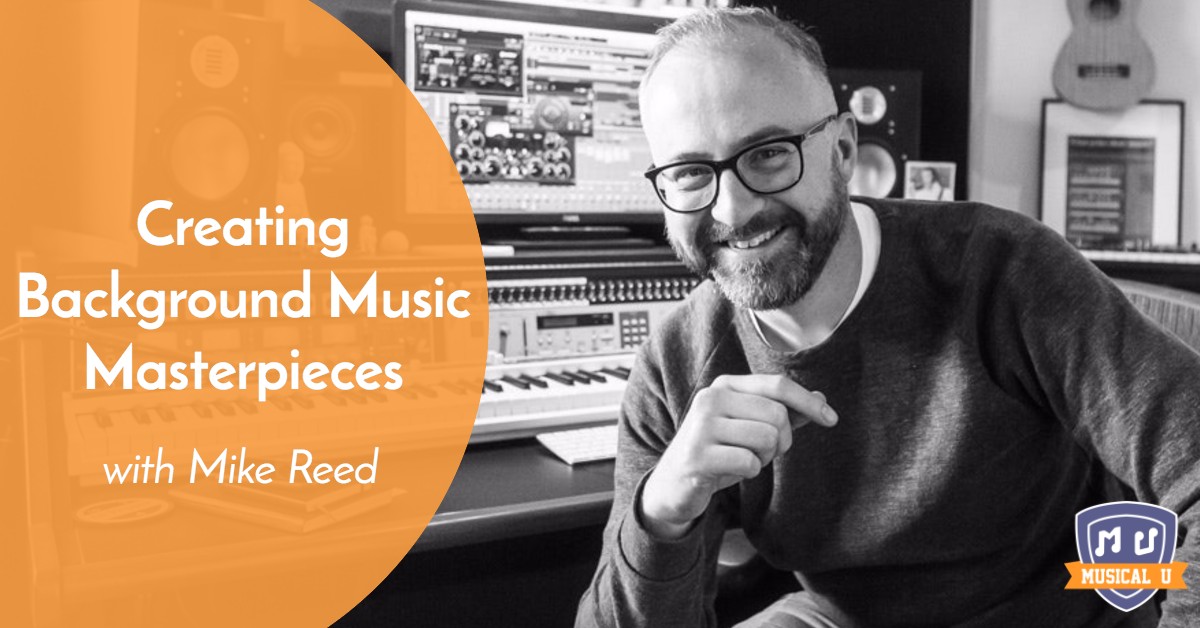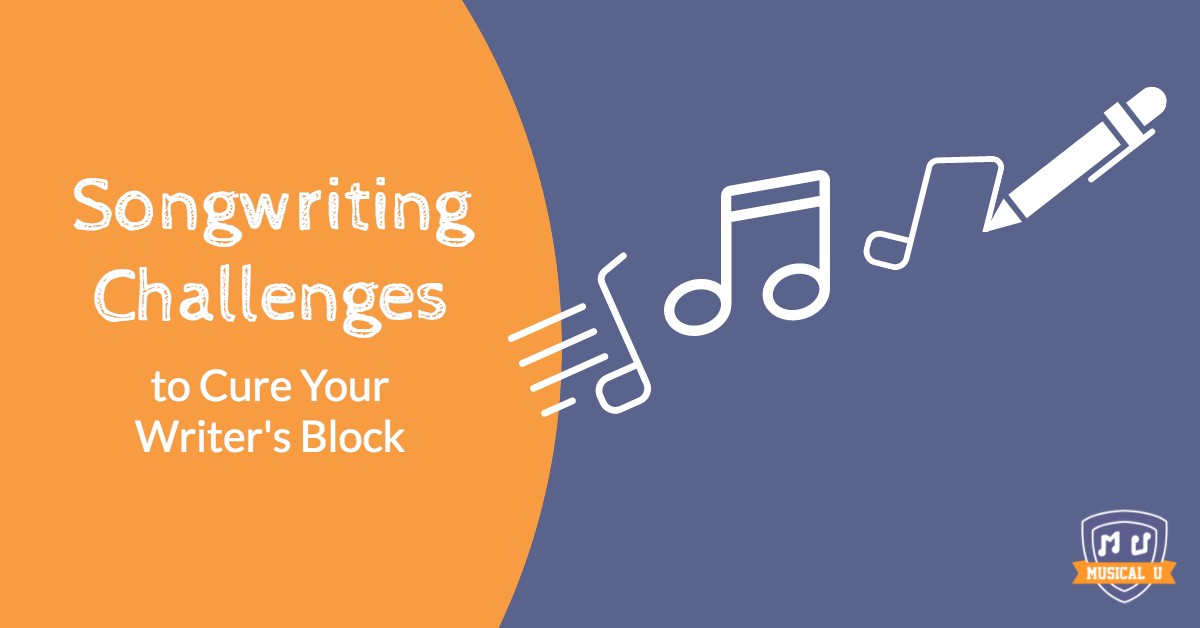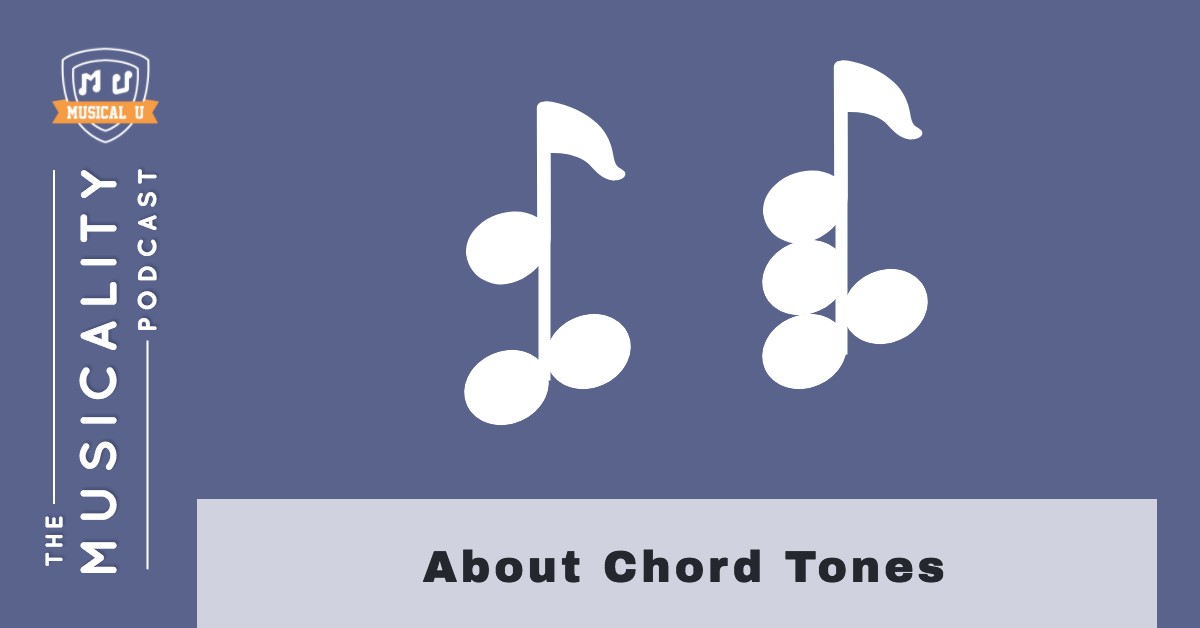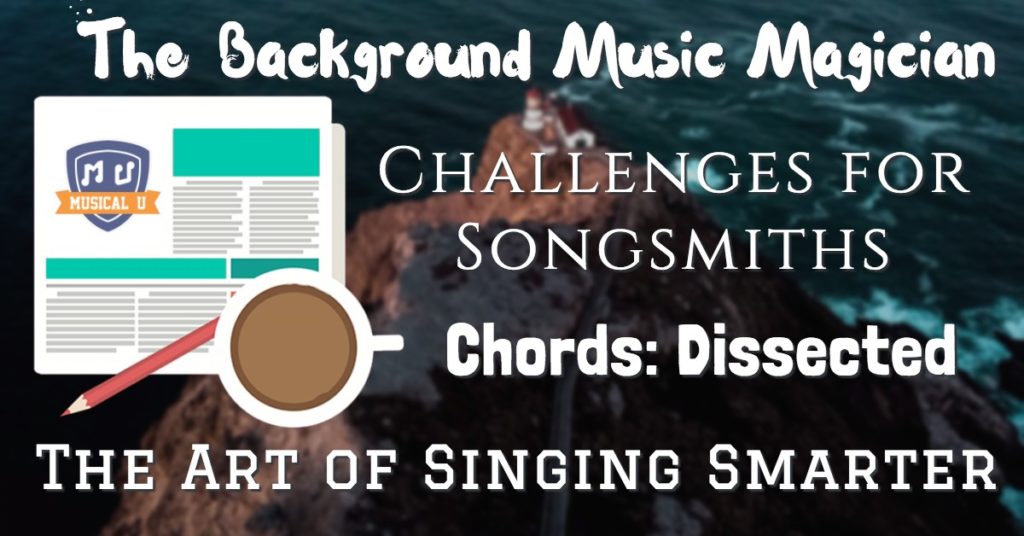Every musician develops at their own pace, acquiring new skills and mastering songs at different speeds, and focusing on the exercises that will best help them attain their musical goals.
But sometimes, you need a little kick to get you to try something a little tougher or something outside your comfort zone. This can work wonders in expanding your musical practice and fast-tracking the development of your musicality.
This week, we at Musical U have three challenges for you:
- Hand over the reins of your creative process to a songwriting challenge, and see how imposed limitations can bring out your creativity
- Go beyond singing “pretty” – learn how to sing smart
- Use your ears to try to pick out the individual notes played simultaneously in a chord
But before we dive into how to do all that, to get you inspired, we have an interview with a man whose job brings him face-to-face with the ultimate challenge: making musical masterpieces that will be put to use in everything from luxury car commercials to the TV adaptation of your favourite book series. The most impressive part? He writes, arranges, produces, and plays multiple instruments on nearly every single track!…
The Background Music Magician
The music we notice is the music we’re listening for: music at a concert, on the radio. In short, places where we’re listening for it.
But what about music in places we don’t actively listen for it? In movies, commercials, and TV programmes?
Drummer-turned-background music composer Mike Reed creates music that will complement the visual media it’s used for. Playing the multiple roles of writer, producer, arranger, and multi-instrumentalist, he crafts compositions that you might hear in your favourite Netflix show or next season’s blockbuster movie, if you just open your ears.
In Creating Background Music Masterpieces, with Mike Reed, Mike talks about what drew him to background music composition, compares the creative and business sides of his work, and gives some truly inspirational advice with bearing on everyone involved in the world of music.
As a truly solo musician, Mike is responsible for all parts of the compositions that he writes. This includes taking the initial ideas and arranging them into a full piece of music. Forrest Kinney gives a great introduction to the art of creating an arrangement.
The music composition industry can be difficult, and finding your big break can seem impossible at times. To learn more about how one composer broke into the film composing industry, tune into The Portfolio Composer’s fascinating podcast episode with Albanian composer Aldo Shllaku.
Mike’s success in finding a niche in the music industry is an inspiring story indeed! The music industry can be so complex that we often don’t think about all the people that have jobs that create music. Thinkspace Education discusses four incredibly interesting behind-the-scenes careers in music that you may not even know existed!
Challenges for Songsmiths
Some days, the songs just flow out of you. Melodies and lyrics pop into your head, fully-formed and ready to be turned into a song.
But sometimes, the creative well runs completely dry. Every time you pick up your instrument or try to put pen to paper, the magic just won’t happen.
We’ve been there, and we know that sometimes you need something to force you to write.
 Enter the songwriting challenge: an exercise where you must write a song (or several!) about a certain topic, or in a certain amount of time. As those who take the challenge soon find, these limitations actually foster creativity, rather than stifling it – your brain will find incredibly inventive ways to work with the constraints imposed on your songwriting process.
Enter the songwriting challenge: an exercise where you must write a song (or several!) about a certain topic, or in a certain amount of time. As those who take the challenge soon find, these limitations actually foster creativity, rather than stifling it – your brain will find incredibly inventive ways to work with the constraints imposed on your songwriting process.
In Songwriting Challenges to Cure Your Writer’s Block, we introduce you to the types of songwriting challenges out there, where you can find them, and how to make your own challenge.
The multitude of different songwriting challenges that are available for your next project means there is something for everyone. While many of them are about producing a song per day, or week, we found a challenge to write a song in only 10 minutes. Quite the challenge! Andy Guitar gives you some tips to ace this challenge!
Often, starting the songwriting process can be the most difficult part. What are you supposed to write about? A popular topic throughout the ages is to write a love song. Dylan Laine shares her process for writing a love song in only one hour.
An additional benefit to songwriting challenges: they remove many of the barriers that songwriters face when starting the songwriting process! They do this by encouraging productivity through deadlines and fixed objectives. Many people find that they are actually much more productive when they have a timeline that they have to meet. Speed Songwriting has even more tips on improving your productivity when writing.
Chords: Dissected
Most musicians, with a bit of ear training and solfège (solfa) practice under their belt, can learn to replicate a series of notes and identify the intervals within it.
But what about chords, when several notes are played simultaneously, with multiple intervals to worry about at the same time?
This week on The Musicality Podcast episode About Chord Tones, we present you with the challenge of figuring out chord tones: the art of dissecting chords into their individual notes. Beyond just being a neat trick, being able to identify chord tones opens up brand new avenues of songwriting, allowing you to hand-pick the perfect notes to go into each chord, and effortlessly solo over your progression.
Furthermore, it works wonders for your improvisational chops, because you now have the tool that bridges the gap between melody and chords.
Learning the structure of chords and what notes are used to create the harmony is an important aspect to learning how to use chord tones. By learning how to solo within the confines of a chord, you’ll get more comfortable with chordal structure and how the notes are laid out on the instrument. This is a practical application for a visual instrument like the piano or guitar; My Guitar Workshop explains how to get started.
Any musician can really benefit by knowing how to improvise with chord tones. These can be a great stepping stone to get more confident in your ability to improvise over chord changes, and there’s no time like the present to start, with Mutant Bass’s clear cut step-by-step method.
Once you have mastered working within the chord tones, it’s time to expand your boundaries into all the other notes in the scale. This will enable you to add color and interest to your music and express yourself. To try your hand at this, Jazz Piano School has a lesson to get you started!
The Art of Singing Smarter
Your voice is an instrument.
And as with any instrument, there is a science behind making beautiful sounds come out. Though many singers can glide by on their instincts and by purely listening, they often hit a roadblock when the time comes to sing sheet music, collaborate with other musicians, or perform vocal techniques.
 This is where “singing smart” comes in – it’s a method to the madness that the vocal world can be. Learning proper singing technique, ear training, and solfège will help you achieve everything you’ve ever wanted as a vocalist, be it improvisation, vocal fry, or being able to sing sheet music you’ve never heard out loud.
This is where “singing smart” comes in – it’s a method to the madness that the vocal world can be. Learning proper singing technique, ear training, and solfège will help you achieve everything you’ve ever wanted as a vocalist, be it improvisation, vocal fry, or being able to sing sheet music you’ve never heard out loud.
Meghan Nixon of HowToSingSmarter.com applies ear training and music theory to her vocal coaching to give her students the freedom to approach new songs, techniques, and challenges with confidence. In How to Sing Smarter, with Meghan Nixon, we sit down with her to learn about her singing background, ear training-focussed teaching approach, and how she came to launch her website, where she provides a treasure trove of resources for singers of all levels.
In her interview, Meghan talked about how she has taught hundreds of musicians over the years. If you are serious about becoming a musician, finding a teacher and taking lessons are a great place to start! A Higher Note discusses why you should take the plunge, especially if you’re uncertain.
For Meghan, she was better able to hear some pitches when she began to play the piano as well. The piano provided a visualisation of the pitch that wasn’t as readily apparent when only using her voice.
You may have struggled to sing without your instrument – and you’re not alone! This podcast from All Things Vocal explains the phenomenon of why it feels so weird to sing without your instrument.
Have you ever found that interval or pitch that you just can’t internalize in your ear training? Meghan takes us through her method for mastering Ra, or the minor 2nd, interval of the chromatic scale.
Get Challenged, Get Ahead
Taking a break from our regularly scheduled music practice to engage with challenges is a great way to discover a new musical skill: in this case, maybe you’ll learn that you songwrite best under strict time constraints, or that you have an excellent ear for chords, or that you picked up sight-singing quickly and easily.
Or, maybe you yourself are inspired to take a page from Mike Reed’s book and try your hand at not only writing a song, but also arranging it and playing each instrument yourself.
Regardless of the challenge you undertake in your practice, get excited about it – you are simultaneously developing your musicality and stepping outside your comfort zone, and that’s something to congratulate yourself for!







